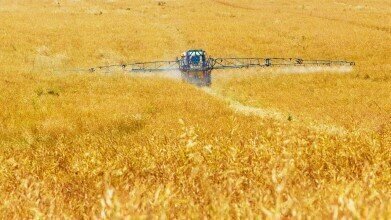Water/Wastewater
What Are Micropollutants Made Of?
Jun 16 2022
In recent years, there has been a growing awareness around the issue of micropollutants. Created via a variety of household and industrial processes, these substances are gradually leaked into our natural environment, contaminating groundwater and surface water sources. Although they are initially found in extremely low concentrations, they have the ability to bioaccumulate over time and can eventually pose grave problems for the health of the natural world.
But what, exactly, are micropollutants made of? This is a tricky question to answer, given that there are a wide range of different elements, chemicals and other substances which can negatively impact marine and freshwater ecosystems. What’s more, many of them are labelled as emerging micropollutants (EMPs), meaning that they remain unregulated and little research has been conducted into their provenance or consequences. Nonetheless, here are some of the major elements which go into their composition.
Heavy metals
Heavy metals are contained within all kinds of consumer products that we use on a daily basis, from cosmetics and health supplements to electronics and jewellery. Over time, they can leach into the natural environment and compromise our water sources. Some of the most commonly observed heavy metals in our environment include arsenic, cadmium, chromium, copper, mercury, nickel, lead and zinc.
Cosmetics
As mentioned above, cosmetics contain a wide variety of substances which can be damaging to the natural world. However, those harmful elements are not confined to heavy metals alone; personal care products (PPCPs) contain an abundance of substances that are classified as micropollutants in their own right. It’s been discovered that the hormones contained with certain such products can disrupt the sexual functioning of some marine and freshwater organisms, even turning males into females.
Herbicides and pesticides
Synthetic chemicals have become instrumental in the field of agriculture, since we require the help of herbicides, pesticides and fertilisers to boost crop yields and feed the world’s increasing population. However, chemicals such as ammonia and phosphate that are part of these products can disrupt the delicate balance of underwater ecosystems, inhibiting the growth of some flora and fauna and unnaturally promoting that of others.
Chemicals
Items which we use every day such as paints, dyes, varnishes, flame retardants, non-stick coatings and packaging materials (to name but a few) are deeply problematic for the environment. That’s because they are made up of chemicals that can leach into their surrounding environment over an extended period of time. Since many of these substances do not biodegrade readily, they can accumulate and damage the life around them.
Pharmaceuticals
The drug industry is worth billions of pounds each year, with the average European citizen consuming almost 50 packs of pharmaceuticals on annual basis. While the use of such drugs may be vital to maintaining our quality of life and seem innocuous in terms of their environmental impact, they can be passed through our bodies and persist in the natural world beyond wastewater treatment systems.
Digital Edition
IET 34.2 March 2024
April 2024
Gas Detection - Biogas batch fermentation system for laboratory use with automatic gas analysis in real time Water/Wastewater - Upcycling sensors for sustainable nature management - Prist...
View all digital editions
Events
Apr 22 2024 Hannover, Germany
Apr 22 2024 Marrakech, Morroco
Apr 23 2024 Kuala Lumpur, Malaysia
Apr 23 2024 Kintex, South Korea
Apr 23 2024 Edmonton, AB, Canada


















